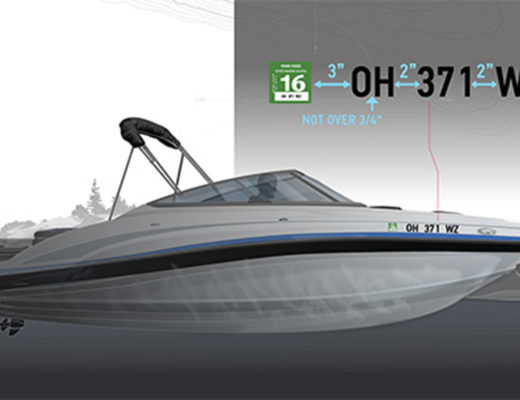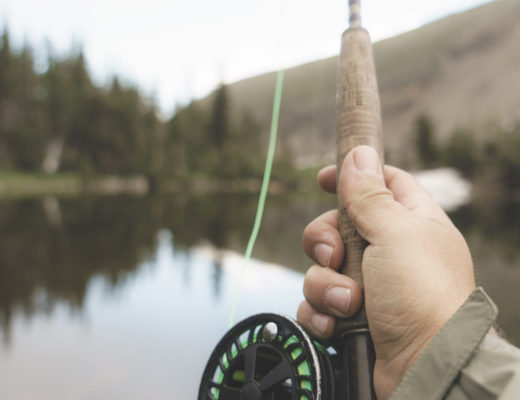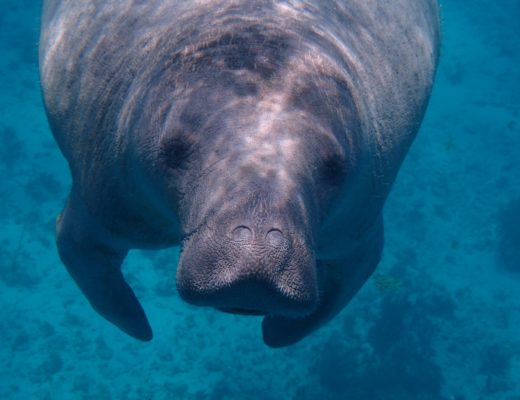Who needs a Boater Education Card in Maryland?
Any person born after July 1st, 1972, who is operating a boat on Maryland waters is required to carry a Certificate of Boating Safety Education, commonly called a boating license, while operating a boat.
The Certificate may be obtained by completing an approved Boating Safety Course or by passing an equivalency examination approved by the Maryland Natural Resources Police. Once obtained, the certification is good for life.
Exemptions
- Anyone licensed by the U.S. Coast Guard to operate a commercial boat
- Residents of another state who are boating on Maryland waters for 60 days or less, in a boat that is properly registered in their home state, who are at least 16 years of age or have proof that they have passed a NASBLA-approved Boating Safety Education Course
- Anyone visiting Maryland for 90 days or less in a boat from a foreign country
- A person operating a boat on a private lake or pond
Persons under 12 years of age are not permitted to operate a boat that is towing any other person on waterskis, an aquaplane, a parasail or other similar device.
As of October 1, 2010, any person under 16 years of age, who is operating a motorized boat that is 11 feet in length or greater, without a valid Boating Safety Certificate, must be under the supervision of an individual 18 years of age or older, who possesses a valid Boating Safety Certificate, or an individual who was born before July 1, 1972.
If an individual under the age of 16 is operating a motorized boat under 11 feet in length, a person of any age possessing a valid Boating Safety Certificate can provide supervision.
Maryland Boating License Requirements For Personal Watercraft (PWCS)
In Maryland you must follow these rules when operating a PWC:
- Be at least 16 years of age to operate
- Wear a U.S. Coast Guard approved life jacket
- Carry a certificate of boater safety education if born on or after July 1, 1972
- Maintain 6 knots or slower within 100 feet of another PWC, vessel, shore, pier, piling, bridge structure, abutment or people in the water
- Have PWC equipped with an operating self-circling device or kill switch
You may not:
- Operate above idle speed in water less than 18 inches in depth.
- Operate between sunset and sunrise.
- Jump, or attempt jumping, the wake of another vessel within 100 feet of that vessel.
- Operate within 300 feet of people in the water or surf fishing activities in the Atlantic Ocean.
- Disturb waterfowl and wildlife.
- Operate in a reckless and/or negligent manner.
Maryland Life Jacket Requirements
All children under the age of 13 must WEAR a U.S. Coast Guard-approved life jacket (Type I, II, III or V) while underway on a recreational vessel under 21 feet in length on Maryland waters. Recreational vessels include: motorboats, sailboats, canoes, kayaks, rowboats and any other device capable of being used for transportation on the water, when the vessel is being used for other than commercial purposes.
The life jacket must be the proper size for the child and must be in serviceable condition. Also, a child under the age of 4 must wear a life jacket that features additional safety precautions, as appropriate for an infant, toddler, or young child, so as to:
- Hold the child securely within the life jacket, including a strap that is secured between the child’s legs to fasten together the front and back of the life jacket;
- Maintain the buoyancy of the child, including an inflatable headrest or high collar; and
- Ensure the ability to quickly grab the child from the water.
This does not apply to a vessel that is moored or anchored or a child who is below deck or in an enclosed cabin.
Life Jacket Types
Type I or OFF-SHORE LIFE JACKET provides the most buoyancy. It is effective for all waters, especially open, rough or remote waters where rescue may be delayed. It is designed to turn most unconscious wearers in the water to a face-up position.
Type II or NEAR-SHORE BUOYANCY VEST is intended for calm, inland water or where there is a good chance of quick rescue. This type will turn some unconscious wearers to a face-up position in the water. The turning action is not as pronounced and it will not turn as many persons to a faceup position under the same conditions as a Type I.
Type III is good for calm, inland water or where there is a good chance of quick rescue. The Type III has the same buoyancy as a Type II. It comes in many styles, colors and sizes and is generally the most comfortable for continuous wear. Float coats, fishing vests, and vests designed with features suitable for various sports activities are examples of this type life jacket.
Type IV or THROWABLE DEVICE is intended for calm, inland water with heavy boat traffic, where help is always present. It is designed to be thrown to a person in the water and grasped and held by the user until rescued. It is not designed to be worn. Type IV devices include buoyant cushions, ring buoys and horseshoe buoys.
Type V Life Jacket or SPECIAL USE DEVICE is intended for specific activities and may be carried instead of another life jacket only if used according to the approval condition on the label. Some Type V devices provide significant hypothermia protection. Varieties include deck suits, work vests, board sailing vests and hybrid life jackets.
Type V or HYBRID INFLATABLE LIFE JACKET is the least bulky of all life jacket types. It contains a small amount of inherent buoyancy and an inflatable chamber. Its performance is equal to a Type I, II or III life jacket (as noted on the label) when inflated. Hybrid life jackets must be worn when underway to be acceptable.
Boat Registration Requirements
In order to legally operate a boat in the state of Maryland, you must obtain a Certificate of Number and validation decals. The Certificate of Number must be on board and available for inspection by an enforcement officer during boat operation.
The Certificate of Number and validation decals can be obtained by submitting an application and fee to the Maryland Department of Natural Resources, Licensing and Registration Service. The Certificate of Number is valid for 2 years and expires on December 31st, of the second year.
Note: A boat’s trailer must also be registered with the Maryland Motor Vehicle Administration.
Boat Registration Exemptions:
- Human-powered boats.
- Boats registered in another state.
- Boats that have been documented by the Coast Guard.
Boat Registration Number and Decal Placement
- The numbers must be applied as a decal, painted or permanently affixed to each side of the boat’s bow (boat owners are not permitted to display any other numbers in this area).
- The numbers must be in bold block letters that are at least 3 inches high and in a color that contrasts with the color of the boat.
- The numbers must be separated from the letters by a hyphen or by an equivalent space.
- The numbers must be read from left to right.
- Validation decals must be placed on both sides of the boat, be within 3 inches of the registration number and be above, below or beside the registration number.
- These placement requirements also apply to personal watercraft (PWCs).
Maryland’s Boat Titling Requirements
All boats that require registration in Maryland are also required to be titled. Without a valid title, a boat will not be registered or be able to renew an application for registration. Payment of vessel excise tax must accompany an application for a title (all vessel excise tax is deposited into the Waterway Improvement Fund).
Other Registration Information
The Maryland Department of Natural Resources (DNR) must be notified within 15 days when:
- A boat is sold, traded or transferred.
- A boat is stolen, lost or destroyed.
Boating and Alcohol
It is illegal in the state of Maryland to operate any boat while under the influence of alcohol or drugs, or any combination thereof.
In Maryland, a person is considered to be under the influence if:
- They have a Blood Alcohol Concentration (BAC) level of 0.08 or higher.
- They are impaired by alcohol, drugs or any combination thereof which prevents them from operating a boat safely.
In Maryland, a person convicted of operating a boat while under the influence will be subject to the following penalties:
Convictions and Fines
Upon a first conviction, they will receive a fine of up to $1,000, imprisonment for up to 1 year, or both.
Upon a second conviction, they will receive a fine of up to $2,000, imprisonment for up to 2 years, or both.
Upon a third conviction, they will receive a fine of up to $3,000, imprisonment for up to 3 years, or both.
Any person operating a boat on Maryland waters is deemed to have given consent to a test to determine if they are impaired by drugs or alcohol, if requested to do so by law enforcement. In addition to any other penalty, a court may prohibit a person from operating a boat for up to 1 year for refusing to submit to a chemical test or for having a blood alcohol content level of .08 or greater.
Boating laws and regulations in Maryland are enforced by the Maryland Natural Resources Police. Patrol boats can be identified by the blue emergency light, the ‘POLICE’ identification on the side of the boat, and the uniformed officers on board.
Boaters are reminded that on the immediate approach of a Maryland Natural Resources Police patrol boat using a flashing blue light, the boat operator, unless otherwise directed by the officer, shall yield the right-of-way, stop the boat, and stay in that position until the Natural Resources Police boat has passed. Failure to stop and/or permit boarding or inspection may subject the operator or owner to a fine of up to $2,000. All boats, including those documented by the Coast Guard, are subject to Maryland’s rules and regulations.
The Coast Guard also has enforcement authority on federal waters.
Note: A boat does not have to be underway to be boarded or inspected. A boat may be boarded at dockside.
Maryland Boat Accident Reporting Requirements
An operator involved in a boating accident is required to:
- Stop their boat at the scene.
- Render assistance to any person who has been injured or who is in danger so long as they can do so without risking their safety or their passenger’s safety.
- Provide their name, address and boat information in writing, to any person who was injured, and to the owner of any property that was damaged as a result of the accident.
A report must be filed with the Maryland Department of Natural Resources (MDNR) if:
- A person is killed or disappears from the boat (must be reported within 48 hours).
- A person requires medical treatment beyond first aid, loses consciousness or is disabled more than 24 hours (must be reported within 48 hours).
- There is property damage in excess of $2,000 (must be reported within 10 days).
Additionally, if a boat with Maryland registration is involved in an accident which results in the death, disappearance or injury of a person, or in property damage exceeding $2,000, the accident must be reported to the MDNR within 30 days.
Boating Accident Report Forms are obtainable from the MDNR Police. The operator of the boat or boats involved in the accident must submit the report to the MDNR Police. Information from individual reports will not be publicly disclosed and cannot be used in court.
Maryland Department of Natural Resources (MDNR) Contact Information
For more information about safe boating in Maryland, contact the Maryland Department of Natural Resources.






